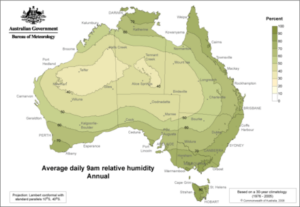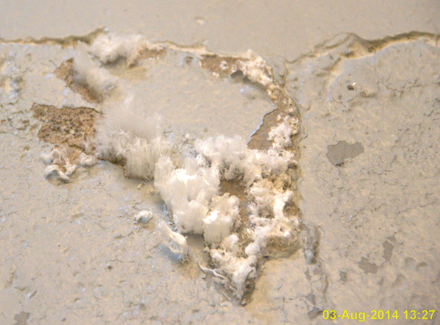In this article we will discuss about the different facts which gives a clarity of Relative Humidity Vs Absolute Humidity.
Both Relative Humidity and Absolute Humidity give indication about the water vapor present in the air but they are quite different from each other. Humidity measurement is done in different ways, all the methods have different applications. These methods are: Relative Humidity, Absolute Humidity and Specific Humidity.
Humidity measurement is crucial whenever there is a need to prevent precipitation, corrosion, mould formation etc, mainly related to fields like food industries, medicine industries, wood works, cold storage, cooling tower in refineries etc.
Measurement of RH is the most common and used for a wide range of applications, calculation of RH for weather forecasting is a well-known fact.
For changing temperature measurement of absolute value of Humidity is preferred as it is independent of temperature. Absolute value is suitable for applications like Spray drying and blower.

Relative Humidity Vs Absolute Humidity
To measure the water vapor content in the air, most common and popular methods are Relative as well as Absolute method. Both indicates the moisture content but in two divers ways.
We can discuss their differences in a tabular form as below:
| Absolute Humidity | Relative Humidity |
| The absolute value of Humidity value gives us the total weight of water vapor per volume of air without considering the temperature. It can be calculated by dividing the total amount of water vapor mw by the given volume V of air. | It can be calculated by dividing actual vapor pressure(E) in the air by the saturated value of vapor pressure Es multiplied by 100 at a fixed temperature. |
| pw = mw/V | RH = (E/Es)x100 |
| It is expressed in g/m3 | RH value is expressed in percentage(%) |
| In the case of the Absolute method of humidity, measurement Temperature is not considered. | RH is inversely proportional to Temperature. |
Relative humidity vs absolute humidity chart
RH value can be estimated from from a psychrometric or a Mollier diagram.
Mollier diagram is nothing but the European version of Anglo-American Psychrometric Chart, same parameters are used but look wise quite different from each other. Engineers and designers most widely used these diagrams as fundamental design implementation.

Air temperature(both dry and wet bulb temperature), amount of water vapor, enthalpy, RH values all are represented graphically in Psychrometric and Mollier charts.
If we know the dry bulb temperature and wet bulb temperature we can easily determine the RH value in the air using a psychrometric chart.
First of all find the specific dry bulb temperature on the horizontal axis of the chart and then find out the wet bulb depression value(i.e. Dry bulb temperature – Wet bulb temperature) on the vertical axis of the chart.
After that mark the point where these two lines from horizontal and vertical point intersect, this intersection point will give us the Relative value of humidity(RH) in percentage.
In the Psychrometric chart, we have Dry bulb temperature on the horizontal axis Humidity ratio(gm water/gm of dry air) on the vertical axis, and RH curves above.
For example, consider air with RH 60% at temperature 200Corresponding to the 200 we have to move until we reach 60% RH curve. Now move to the right side up to the end of the diagram to find the absolute humidity vertical line that will show the amount of water vapor in gm.
Absolute vs Relative Humidity Formula
Absolute value of Humidity gives us the total weight of water vapor per volume of air without considering the temperature, Relative method is an comparison between current value of absolute value of humidity and maximum possible value reached at a particular temperature.
The difference between Formulas used are as follows:
| Absolute Humidity Formula | Relative Humidity Formula |
| Absolute pw is the total amount of water vapor mw present in a given volume of air V regardless of temperature. | RH can be calculated by dividing actual vapor pressure(E) in the air by the saturated value of vapor pressure Es , multiplied by 100 at a fixed temperature |
| pw = mw/V | RH = (E/Es)x100 |
In case of Absolute type humidity measurement always remember that warmer air holds more moisture than colder air.
In case of Relative Humidity if temperature has increased keeping the Absolute Humidity same or keeping the moisture content same, the Relative Humidity will decrease.
By maintaining a constant Absolute value of Humidity, if we reduces the temperature in the atmosphere, a higher value of Relative value of Humidity will be observed.
Difference between Humidity and Absolute Humidity
Absolute type of humidity can be considered as a form or type of Humidity as it expresses the moisture content or water vapor content in the air in g/m3.
The differences between Humidity and Absolute Humidity Formula are as follows:
| Humidity | Absolute Humidity |
| Humidity is water vapor content in the air. High humidity in the atmosphere makes us uncomfortable as we sweat more. | Absolute(also known as water vapor density) humidity is the mass of water vapor per unit of dry air in a specific air volume. |
| Depending on the requirement of the applications we can adopt methods like Relative, Absolute and Specific Humidity to determine the humidity in surrounding environment. | If the volume of air is not constant, the water vapor calculated by the Absolute method keeps changing along with the change in temperature and pressure. For this reason, Absolute method is not applied in calculations related to chemical engineering. |

Difference between Absolute and Specific Humidity
Absolute and Specific Humidity are used to measure humidity.
To know the differences between Absolute and Specific Humidity we can go through the table below:
| Specific Humidity | Absolute Humidity |
| Specific Humidity is the ratio of the mass of water vapor in the air to the total mass of air and water vapor. | It is the actual mass of water vapor in unit volume of air. |
| Total air mass(including dry air) is considered | Air volume is considered |
| Specific humidity Unit is g/kg. | Its Unit is g/m3. |
Humidity plays an important role in our daily life and devices called psychrometer or hygrometer are used to measure humidity in the air.



I am Sangeeta Das. I have completed my Masters in Mechanical Engineering with specialization in I.C Engine and Automobiles. I have around ten years of experience encompassing industry and academia. My area of interest includes I.C. Engines, Aerodynamics and Fluid Mechanics. You can reach me at